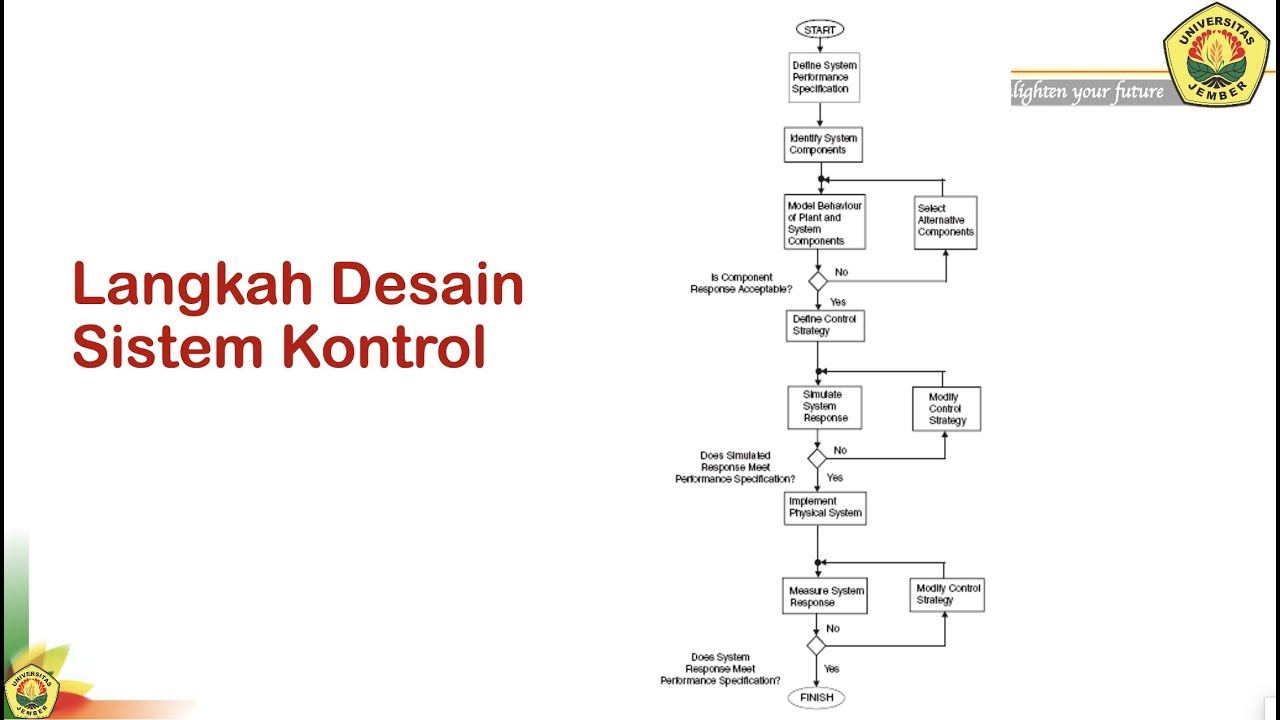Eksp. Sistem Kendali - Analisis Root Locus - bagian 1
Summary
TLDRIn this video, the instructor presents a comprehensive guide to root locus analysis in control systems. Key objectives include understanding the impact of feedback gain on system stability and learning to interpret root locus graphs. The discussion covers stability classifications—such as asymptotic, critical, and unstable systems—and the derivation of the characteristic equation. Through practical examples, viewers are shown how varying feedback gain influences pole locations, reinforcing the significance of root locus plots in system design. This engaging lesson encourages deeper exploration into control system fundamentals.
Takeaways
- 😀 The video covers root locus analysis in control systems, emphasizing its importance in understanding system stability.
- 😀 Three main objectives are outlined: understanding feedback influence, grasping root locus graphs, and designing systems using root locus methods.
- 😀 System stability is categorized into three types: asymptotically stable, critically stable, and unstable, based on pole locations in the complex plane.
- 😀 Poles on the left side of the complex plane indicate stability, while those on the right suggest instability.
- 😀 The characteristic equation for a closed-loop system is derived from the feedback system model, affecting system stability.
- 😀 The relationship between gain values and pole locations is crucial; varying gain results in different pole configurations.
- 😀 Root locus graphs visually represent the relationship between gain and pole locations, aiding in stability analysis.
- 😀 A practical example illustrates how altering feedback gain can reposition system poles to achieve desired stability.
- 😀 The MATLAB function 'rlocus' can be used to easily visualize root locus graphs and determine pole locations for specific gain values.
- 😀 Overall, understanding the principles of root locus analysis is essential for designing stable control systems.
Q & A
What is the main focus of the video?
-The video focuses on root locus analysis as part of control system experimentation, aiming to teach how to understand and design systems using this method.
What are the three objectives of the experiment discussed in the video?
-The three objectives are: understanding the influence of feedback gain on system stability, comprehending the root locus graph as a representation of gain variation, and being able to design systems using the root locus method.
How is system stability defined in the context of the video?
-System stability is defined by the location of poles in the complex plane: asymptotically stable if poles are on the left, critically stable if on the imaginary axis, and unstable if on the right.
What mathematical equation is used to determine the poles of a closed-loop system?
-The poles of a closed-loop system can be determined using the characteristic equation, which is derived from the feedback equation set to zero: 1 + G(s)H(s) = 0.
What is the significance of feedback gain in control systems?
-Feedback gain influences the location of poles in a system, affecting its stability and response characteristics.
What does a root locus graph represent?
-A root locus graph represents the relationship between feedback gain values and the corresponding locations of poles in the system, showing how they change as gain is varied.
Can you explain the concept of negative feedback in this context?
-Negative feedback is used to stabilize a system by reducing the gain or altering the poles' locations, thus affecting the overall system response and stability.
How can one visualize the root locus of a system?
-The root locus can be visualized using specific functions in software, such as calling 'rlocus' with the system parameters to generate the graph.
What is the example function provided in the video?
-The example function given is G(s) = k / (s + 5), used to illustrate the principles of root locus analysis.
What conclusion can be drawn about the influence of gain on pole location?
-As the gain is varied, the locations of the poles can shift, which allows for control over the system's stability and response characteristics, enabling the design of stable systems.
Outlines

Dieser Bereich ist nur für Premium-Benutzer verfügbar. Bitte führen Sie ein Upgrade durch, um auf diesen Abschnitt zuzugreifen.
Upgrade durchführenMindmap

Dieser Bereich ist nur für Premium-Benutzer verfügbar. Bitte führen Sie ein Upgrade durch, um auf diesen Abschnitt zuzugreifen.
Upgrade durchführenKeywords

Dieser Bereich ist nur für Premium-Benutzer verfügbar. Bitte führen Sie ein Upgrade durch, um auf diesen Abschnitt zuzugreifen.
Upgrade durchführenHighlights

Dieser Bereich ist nur für Premium-Benutzer verfügbar. Bitte führen Sie ein Upgrade durch, um auf diesen Abschnitt zuzugreifen.
Upgrade durchführenTranscripts

Dieser Bereich ist nur für Premium-Benutzer verfügbar. Bitte führen Sie ein Upgrade durch, um auf diesen Abschnitt zuzugreifen.
Upgrade durchführen5.0 / 5 (0 votes)






